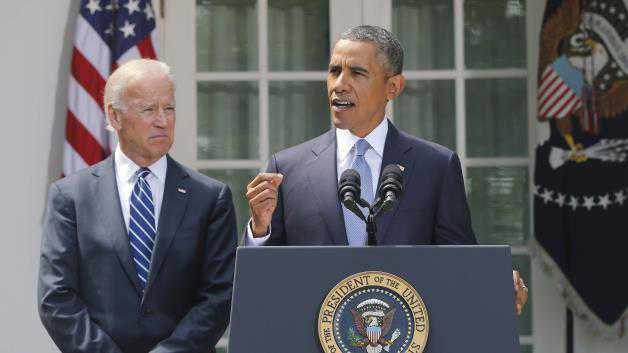By Martin Jacques
Reviewed by John Gray – 18 June 2009
It is clear that the rise of China marks the end of western global hegemony, but just what the coming Chinese ascendency will look like is another matter.
 The civilisation state
The civilisation state
On his first visit to China as US treasury secretary, at the start of this month, Timothy Geithner attempted to reassure an audience at Peking University that there is no need to worry about the enormous holdings China has built up in US government bonds. “Chinese assets are very safe,” he declared. Geithner’s statement produced loud laughter from the largely student audience.
Unlike most western commentators, who still give the Obama administration the benefit of the doubt, China’s emerging elite know there is no prospect that the United States will pay back its debts at anything like their current value. The only way the US can repay its vast borrowings is by debasing the dollar – a process in which China will inevitably be short-changed. Significantly, the students’ response was not anger, but derision – a clear sign of how the US is now perceived. Resentment at US power is being replaced by contempt, as the impotence and self-deception of the American political class in the face of the country’s problems become increasingly evident.
In a characteristically incisive formulation, Martin Jacques writes that the “rise of China and the decline of the United States are central to the present global depression”. Although China remains a fast-emerging, rather than a developed, economy and even though it is nowhere near acquiring America’s worldwide military reach, the crisis has speeded up a shift in the balance of power between the two countries that has been taking place for decades. The importance of China’s advance goes far beyond the incontrovertible fact of America’s relative decline, however. If Jacques is right, the rise of China will bring the end of the western world as we have known it over the past several hundred years.
Western commentators on China fall into two main camps. The first, which we may called the China sceptics, rejects out of hand the notion that China can ever become the world’s dominant power. The second – which is increasingly vocal and influential, especially in the US – sees the rise of China as a major threat to the existing, western-dominated global system. Though the two views are not finally compatible, they can quite often be found in the same person. The awkward fact with which both of them struggle is that China’s industrialisation – the largest in history – has been achieved indigenously. China’s success is widely praised by western governments, but it has been based on a rejection of western advice.
Like climate-change sceptics, China sceptics tend simply to ignore evidence that does not fit their world-view. Even if they accept that China’s success over the past 30 years has been achieved by following a distinctive path, they can only insist that China will be compelled to westernise at some point in the future – overlooking how it is western neoliberalism, and not Chinese capitalism, that has collapsed. Or else, they must admit that China can go on developing, and even overtake the west, while remaining as different from the west as it has ever been. This last is a terrifying scenario, as it implies that if a country westernises, that does not ensure its economic success – if anything, it may be an impediment. In other words, China may be so successful because it is so different from the west. At this point, the first view of China morphs into the second and we start to hear hysterical warnings of the threat posed by China’s inexorable rise. Inside every China sceptic is a prophet of the New Yellow Peril waiting to be let out.
The common conviction of nearly all these commentators is that no country can modernise without following a western path. The message of When China Rules the World – by far the best book on China to have been published in many years, and one of the most important inquiries into the nature of modernisation – is that this assumption blinds us to the way the world is being reshaped before our eyes. Jacques’s comprehensive and richly detailed analysis will be an indispensable resource for anyone who wants to understand contemporary China; but its primary value is in overturning the assumption – almost universal in the west, and held by some in China – that, as a country develops, it is bound to evolve into something like a western state. As Jacques points out, China “may seem like a nation state, but its geological formation is that of a civilisation state”. When China was weak it had little alternative but to accept western terms of reference. As it grows richer and stronger, China is more and more affirming the inherent value, if not the actual superiority, of its ancient civilisation. Far from turning its back on its history, the country is returning to the past in order to forge a new version of modernity.
“The emergence of China as a global power,” Jacques writes, “in effect relativises everything.” The author is not endorsing any kind of fashionable postmodernism here. He is clear that there are universal human values. His argument is rather that there are many ways of recognising universal values in a modern society. All the same, the version of modernity which appears to be emerging in China does come with some rather dark spots. The deep sense of China as a unitary civilisation, together with a pervasive belief in Han superiority, leaves little tolerance for the claims of other cultural groups.
Some way may be found, the author suggests, whereby the Tibetans can coexist with the Chinese state. But, as he admits, the dominant sense of Chinese identity is essentially racial, and most Chinese look down on Tibetans with loathing. In line with this, and also for strategic reasons, “China has encouraged large-scale Han migration in an effort to alter the ethnic balance of the population and thereby weaken the position of the Tibetans who for the most part live in the rural areas and in segregated urban ghettos.” It is hard to avoid the conclusion that, in building the Chinese civilisation state, Beijing is systematically destroying a unique civilisation.
A resurgent China will be problematical in a number of ways. It remains very unclear how China’s rulers view the international system. Will they try to reshape it in their own image, and if so what will the world then look like? Jacques argues that something like the tributary system that existed in the past can be re-created, but that system applied mainly to China’s nearer and smaller neighbours. It is impossible to envisage such an unequal relationship being acceptable to India or Russia or, for that matter, Japan. Again, can China extend its control of world markets while retaining its grip on its own economy? Control of capital flows has been one of China’s strengths in the current crisis. Will it be ready to compromise this advantage in order to supplant the failing dollar as the world’s reserve currency?
There are no clear answers, if only because China’s ruling elite have almost certainly not begun to answer these questions themselves. What is undeniable is that China’s ascendancy is bringing with it an international environment potentially more volatile than any in the recent past. So far, says Jacques, “The changes wrought by China’s rise have done little to disturb the calm of global waters, yet their speed and enormity suggest that we have entered an era of profound instability; by way of contrast, the Cold War was characterised by relative predictability combined with exceptional stability.”
The witless, end-of-history triumphalism that shaped western attitudes in the post-Cold War era is nowhere more misplaced than in regard to China. History is on the move again – and it is not the delusional, teleological, self-congratulating history dreamt up by liberal rationalists, which somehow always ends with themselves as the winners. The rise of China is the real thing, a world-changing event that marks the end of western hegemony.
New Statesman



